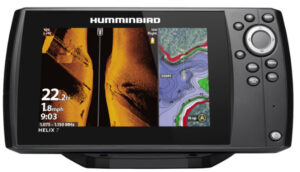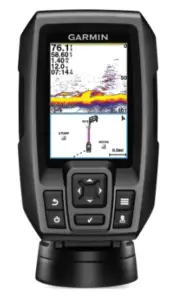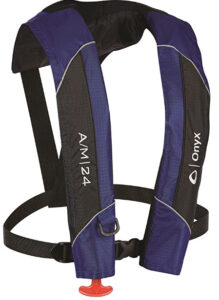How To Fish El Capitan Reservoir | Your El Capitan Reservoir Fishing Report
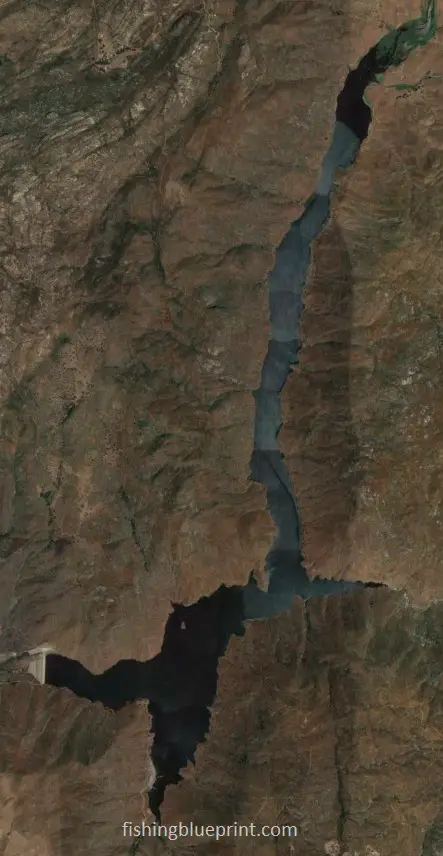
El Capitan Reservoir, known by the locals as “El Cap” is a large lake that sits 30 miles from downtown San Diego and 136 miles away from Los Angeles.
Overall it’s a relatively popular lake being the biggest lake managed by the city of San Diego. In this post you’re going to be given the blueprint to fish this lake.
So what are the best tips for fishing El Capitan Reservoir ? There are three important factors you must know if you want to know how to fish El Capitan Reservoir successfully. First, you need to know what kind of fish is in El Capitan Reservoir . Second, it’s important for you to know which part of the lake each species can be found. Lastly, knowing what are the best baits that work on El Capitan Reservoir is vital. However, tactics, baits, and locations will be different for each type of fish that you target. So let’s talk about the steps you need to take in order to give you the best chance of catching a fish on El Capitan Reservoir.
Key Takeaways
It has been my experience that this lake lake can give locals and visitors the opportunity to test their luck in catching one of the many game species this lake has to offer, such as bass, catfish, bluegill, and much, much more!
Here’s the most recent and updated El Capitan Reservoir Fishing Report – it gives you a quick and easy list of some really good fishing spots. If you’re looking for more detail on how to fish each spot scroll down into the article.
- Upper River
- The Bend
- The Corner
- Canejos Creek Arm
Here are some additional fast and helpful tips just for you:
- The easiest way to fish this lake is by boat, but there are areas to fish from the bank, or by kayak or float tube.
- There are public boat ramps to use.
- Camping and RV parking is available.
- You can buy tackle and groceries at the lake or at one of the tackle shops in the outer edges of San Diego.
About El Capitan Reservoir
El Capitan Reservoir is a deep body of water with the average depth being 40 feet and a maximum depth just over 190 feet when the lake is completely full. Being approximately 7 miles long and 1/4 mile across. El Capitan Reservoir has 22 miles of shoreline and spans over 1,562 surface acres. This reservoir plays a vital role in supplying drinking water to San Diego. El Capitan Reservoir gives locals and visitors the opportunity to test their luck in catching one of the many game species this lake has to offer.

Important Lake Warnings
Algae blooms may be present which may affect fishing, swimming, and water contact in general.
According to parks.ca.gov, “every one of California’s new laws requires boat operators to have a California Boating Card. The card is required for anyone under the age of 41 to operate a boat in California’s waters.”
If you are fishing and camping, fire bans may be in effect due to the ongoing drought conditions.
According to Rocky Mountain Recreation Company (who manages the lake for San Diego), the lake is open to only certain days of the week and will vary due to the season.
Summer Lake Access Schedule (May-October)
Fridays, Saturdays and Sundays the lake is open to fishing, general cruise boating and water contact is authorized, meaning water-skiing, wakeboarding, swimming is allowed. The lake is open 1/2 hour before sunrise to sunset.
Mondays and Tuesdays the lake is open for fishing and general cruise boating. No water contact activities are allowed. The lake is open 1/2 hour before sunrise to sunset.
Winter Lake Access Schedule
Friday, Sunday, Monday and Tuesday’s the lake is open for fishing and general cruise boating. No water contact activities are allowed. The lake is open 1/2 hour before sunrise to sunset.
On Saturdays the lake is open to fishing, general cruise boating and water contact is authorized, meaning water-skiing, wakeboarding, swimming is allowed. The lake is open 1/2 hour before sunrise to sunset.
Wednesdays and Thursdays the lake is completely closed.
Other Closures or Restrictions: Boating is restricted to the front bay, the major area of the lake near the dam, during times of low water. The number of water activity boats that can be launched is restricted.
Cost of entry (per rocky mountain recreation company)
LAKE PERMITS (Cash only)
Adult Fishing Permit – $8.00
Youth Fishing Permit – $2.50
Senior Fishing Permit – $4.00
Boat Launch Permit – $7.00
Advance Boat Launch Permit – $7.00
Advance Fishing Permit – $8.00
Adult Water Contact – $10.00
Youth Water Contact – $5.00
Prices are subject to change at anytime.
What Kind Of Fish Are In El Capitan Reservoir Lake
- Largemouth bass
- Channel catfish
- Black crappie
- Bluegill
El Capitan Reservoir Fishing Tips & General Strategies
Hey there angler, if you’re looking for a good time fishing, El Capitan Reservoir is the place to be! It’s a primo spot for largemouth bass and crappie fishing, and is one of the top producing lakes in the area (sorry San Vicente reservoir, you’re still cool though). Largemouth bass are the main event here, so get ready to reel in some big ones.
It can be a challenge to break down this body of water… So that’s why I created this El Capitan Reservoir Lake Fishing Report to help you to easily start catching fish fast!
Water Clarity:
The water clarity at El Capitan Reservoir can vary, but it’s generally on the clearer side, having a visibility ranging around 5-15 feet. But, during certain times of the year, the lake can get really stained.
Structures and Fishing Cover:
El Capitan Reservoir has got all the ingredients for an epic day of bass fishing. Get ready to explore some of the most promising structures and cover in the lake:
- Points
- Humps
- Rocky Shores
- Grass Beds
- Wood Cover
- Docks and Man-made Structures
Springtime Fishing update
I’ve got the inside scoop on the latest spring fishing action at El Capitan Reservoir, and let me tell ya, it’s the place to be for all you bass fishing fanatics out there. I’ve been hearing reports from fellow anglers, and it’s time to share the knowledge.
- Water Temperature: Springtime has the water temps hovering around 58 to 73°F, which means the bass are getting active and moving up shallow.
- Water Clarity: Expect stained water with visibility ranging from 2-4 feet. Algae blooms might give you some pea soup conditions, but don’t let that deter you.
- Wind and Weather: Be prepared for some overcast mornings and sunny afternoons. Dress in layers to stay comfortable as temperatures rise throughout the day.
Now let’s dive into the juicy details – what’s working, and where the fish are biting:
Largemouth Bass
Techniques and Baits:
- Drop-shotting: This finesse technique has been producing some solid catches. Use 4-6″ brown, blue, black, green, or purple worms for best results.
- Pitching worms: Rig up a 4.5″ Senko in pumpkinseed or a Roboworm in the People’s Choice color. Use a Spot Remover jig head or a weedless Gamakatsu octopus hook with a small split shot for a stealthy presentation.
- Jigs: Try flipping jigs with a Yamamoto twin tail grub trailer (in black or brown/purple colors). Fish these near rock piles or vertical drop-offs, and don’t forget the smelly jelly for added attraction.
- Topwater: Early morning topwater action can be a blast, so be prepared with a popper or a walking bait to entice those aggressive bites.
Locations:
- San Diego Arm: This sweet spot in the northeast part of the lake has a mix of shallow flats and deeper channels. You know that that means… makes it perfect for spawning bass. Keep an eye out for vegetation pockets with hard gravel or rocks, those bass might be building nests there.
- Conejos Arm: Head over to the mid-lake on the east area to check out this spot because it’s got a rocky shoreline and lots of submerged structure. Look for those cozy coves and protected areas along the arm, and don’t be afraid to flip your baits into tight spots to get their attention.
- Boulder Bay: If you’re fishing up the San Diego Arm swing by the “southern side” and you’ll find Boulder Bay. This spot is famous for its massive boulders and rock formations. These structures create the perfect home for bass to spawn.
Crappie
- Techniques and Baits: Minnows and nightcrawlers rigged like plastic worms are the go-to baits. Use a small split shot and slowly reel along the bottom for the best results.
- Locations: Look for deep water spots with shallow areas and wood structure nearby.
Catfish
- Techniques and Baits:
- Cut bait: Using cut bait, such as mackerel or shad, can attract hungry catfish looking for an easy meal.
- Stink baits: Try using dough baits or dip baits with strong scents to draw catfish from a distance.
- Locations:
- Deeper holes: Look for deeper holes near shallow flats where catfish might be resting or searching for food.
- Cover: Submerged trees, brush piles, or rock ledges are prime spots for catfish to hide out.
El Capitan Reservoir – Summer Fishing update
Hey there, buddy! I got the lowdown on El Capitan Reservoir’s summer fishing scene. Here’s what you need to know to reel in some beauties:
Water Temperature: The water’s sitting at a balmy 76-79°F. Feels nice, don’t it?
Water Clarity: It’s mostly stained with 2-4 foot visibility, but sometimes you’ll get lucky with clear water up to 4+ feet.
Wind & Weather Conditions: Summer is getting stupid hot and can be a mixed bag with wind, rain, and sun all in one day. Be prepared for anything, my man! Bring sunscreen and a good fishing cap.
Techniques and Baits:
Largemouth Bass
Bass are diggin’ smaller jigs on lighter line, mainly around 15-30 feet of water. Keep an eye on schools of shad, and use a fish finder if you need to locate those bait fish. Topwater and jerk baits can also produce good results, especially around white birds. Drop shotting with a Roboworm can save the day when the bass ain’t bitin’ elsewhere.
Bluegill
The bluegill bite is off the hook! Use worms or crickets and you’ll have a blast. They’re everywhere, so you can’t miss ’em. Fishing early morning and late afternoon will give you the best results, and don’t be afraid to experiment with different techniques.
Crappie
These big and fat fellas are still biting, but they’re a bit harder to find. Look for huge schools and bring your A-game. Jigs and minnows are your go-to baits, and try targeting deeper waters around submerged structures.
Catfish
The catfish bite is tough but rewarding. Go deep with sinker bait, and try fishing early morning or late afternoon for better luck. Stink baits, cut baits, and nightcrawlers can all produce results, so mix it up and see what works best for you.
Locations:
Bass
- Kimball Arm: Focus on its deeper underwater structure and rocky points, making it a prime location to target bass during the summer months. Look for natural points along the straight arms, drop-offs and ledges.
- Conejos Arm: This area has a ton o submerged vegetation and rocky outcroppings. Guys have been having success fishing the mouth and along the creek channel bends. Don’t forget to try your luck near the submerged trees and bushes.
- Saddle Dam Cove: This cove has a mix of shallow and deeper waters, which provides a great habitat for bass during the summer. Guys are catching them in deeper drops and on the edges of the cove. Focus on submerged structures and rock piles. Secondary rock points in 10-20 feet of water can be especially productive.
Bluegill & Crappie
These two are all over the place! Just cast your line, and you’re bound to hook into some slabs. Look for submerged bushes, rock piles, and other structures that can hold these fish. Pay attention to the birds; they can often lead you to the right spot.
Catfish
Stay patient, and you’ll find them lurking in deeper waters. Remember, early morning and late afternoon are prime times for catfish. Try targeting rock piles, drop-offs, and steep underwater points. Keep your bait near the bottom and stay vigilant for any signs of a bite.
But Where Are The Best Places To Fish At El Capitan Reservoir?
And in no particular order here is that list of the best fishing spots at El Capitan Reservoir.
DISCLAIMER: The material provided is for general information purposes only. It’s important to understand that any information provided in this article can change at any time. Any maps or graphics featured are not to be used as navigational aids. Fishing Blueprint will not be responsible for any personal injury or property damage from any misuse of the maps or graphics provided. It’s completely impossible to give you every single spot where you can potentially catch a fish. But, what this list does do is to give you a helping hand and narrow down to the most productive fishing spots.
Upper River/ San Diego Arm

Look carefully at this fishing spot under lower water conditions…
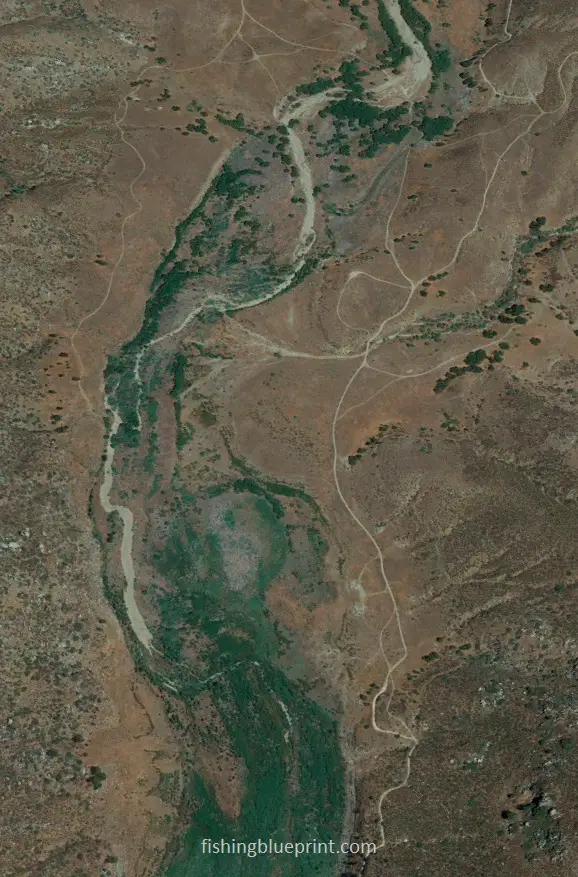
If you’re looking to catch some spawning bass, you should head to Boulder Bay within the San Diego River arm during late March and early April – it’s one of the best spots! And if that’s not enough, this brush-filled cove is also a goldmine for crappie and catfish. Just keep in mind that how far you can go up the river arm depends on the water level in the lake. Oh, and did I mention the massive boulders and rock pile patches in the area? It’s like a playground for anglers!
Located: North end of the lake
Structural features: Flooded vegetation, submerged brush, standing timber, creek channel, rocky banks, boulders, and ledges
Best species to target: Bass
Most effective way to fish this spot: Boat
The Bend
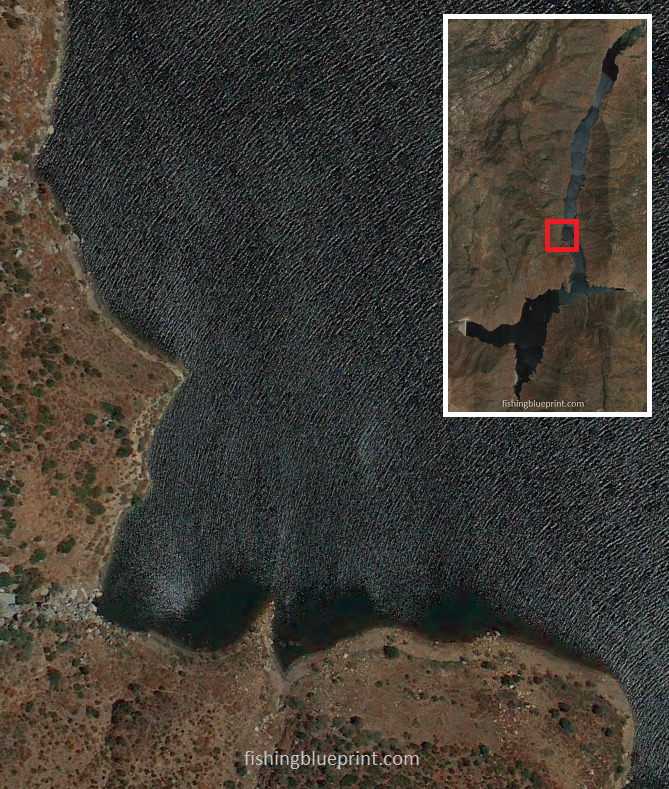
Look carefully at this fishing spot under lower water conditions…
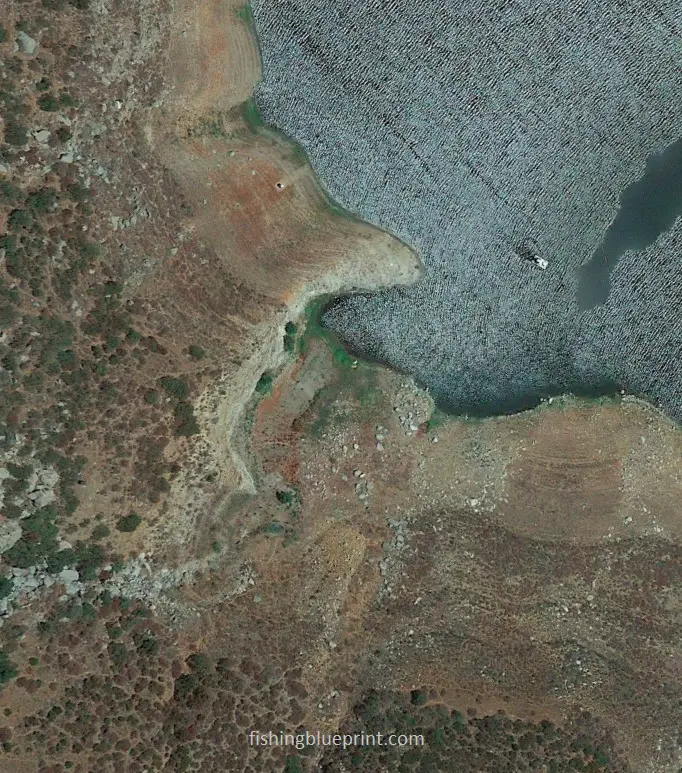
This is the first significant river channel bend in this reservoir, and is the place to be in the summer and winter.
The shoreline is teeming with dense brush, and the area boasts some serious slopes, ledges, and drop-offs. As a result, you’ll find plenty of rocky rubble, boulders, and bedrock that the bass just can’t resist.
Located: Middle lake
Structural features: Channel swing, rocky banks, boulders, ledges, vegetation, brush, standing timber
Best species to target: Bass
Most effective way to fish this spot: Boat
The Corner
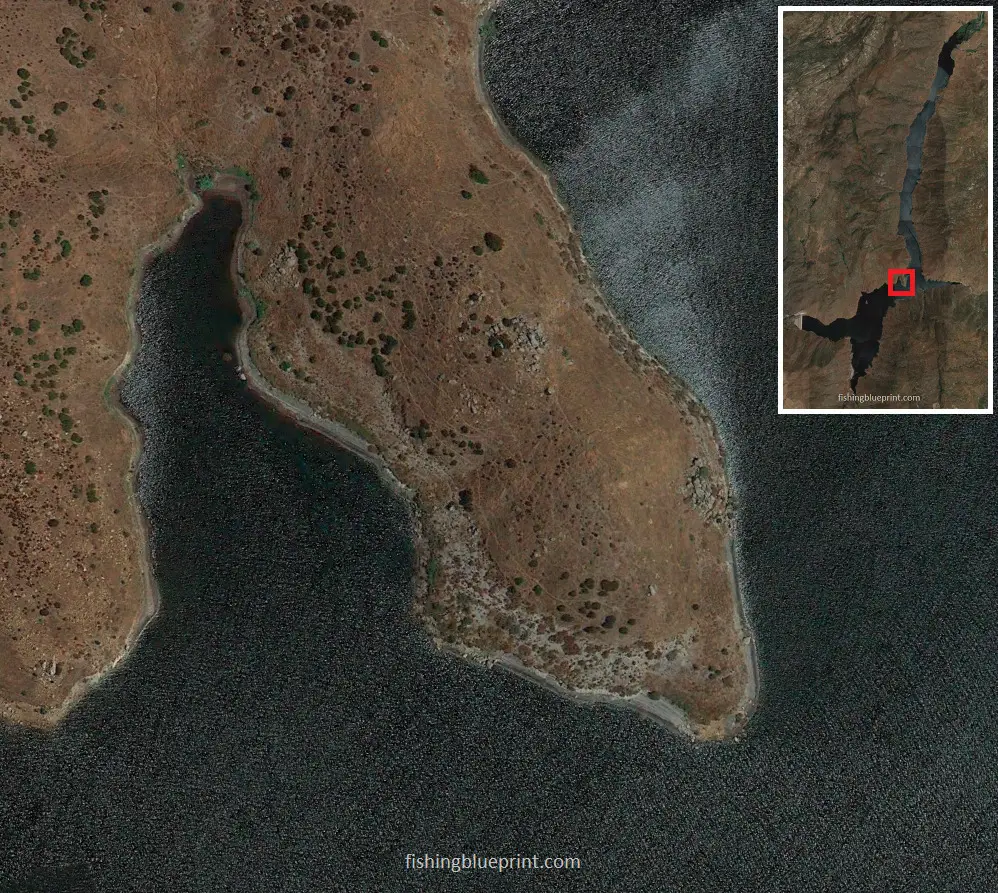
Look carefully at this fishing spot under lower water conditions…
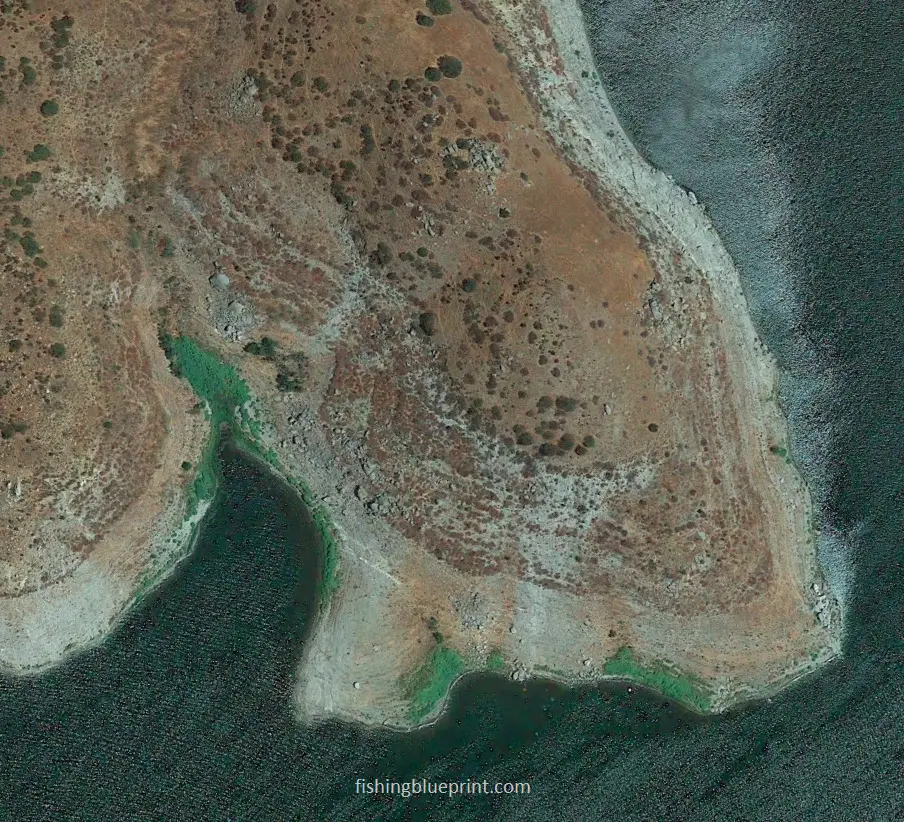
The Corner is a considered on of this lakes fishing hot spots – it’s got more structure than a Jenga tower in a small area.
With a sharp bend in the river, the shores are steep and loaded with rock patches and boulders. And if that’s not enough, there’s a sweet cut-cove around the point, brimming with submerged brush and towering timber…
Oh, and let’s not forget the other areas with massive rock piles – it’s a good thing fish don’t have vertigo!”
Located: Middle lake
Structural features: Channel swing, rocky banks, boulders, ledges, vegetation, brush, standing timber
Best species to target: Bass
Most effective way to fish this spot: Boat
Canejos Creek Arm
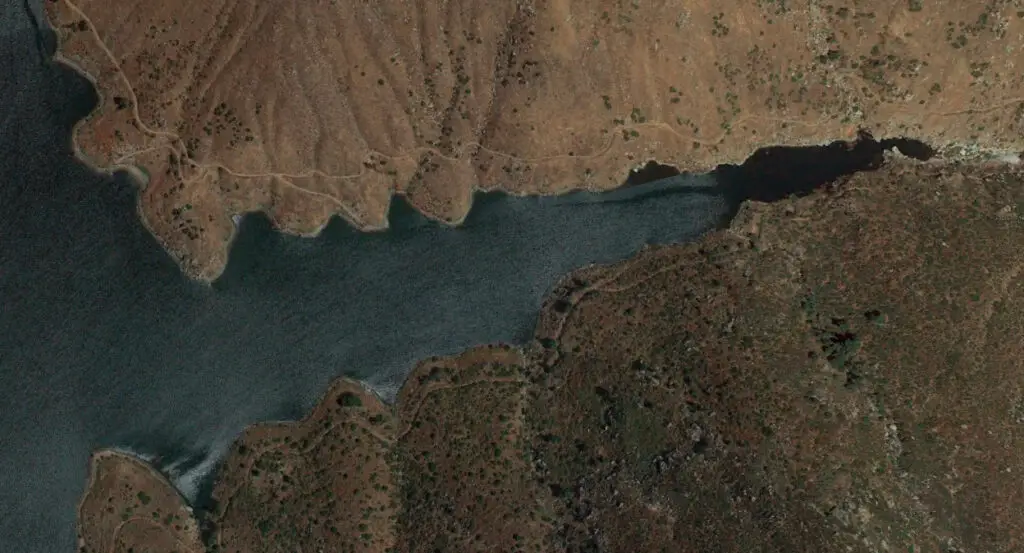
Look carefully – this is the UPPER creek under low water conditions…
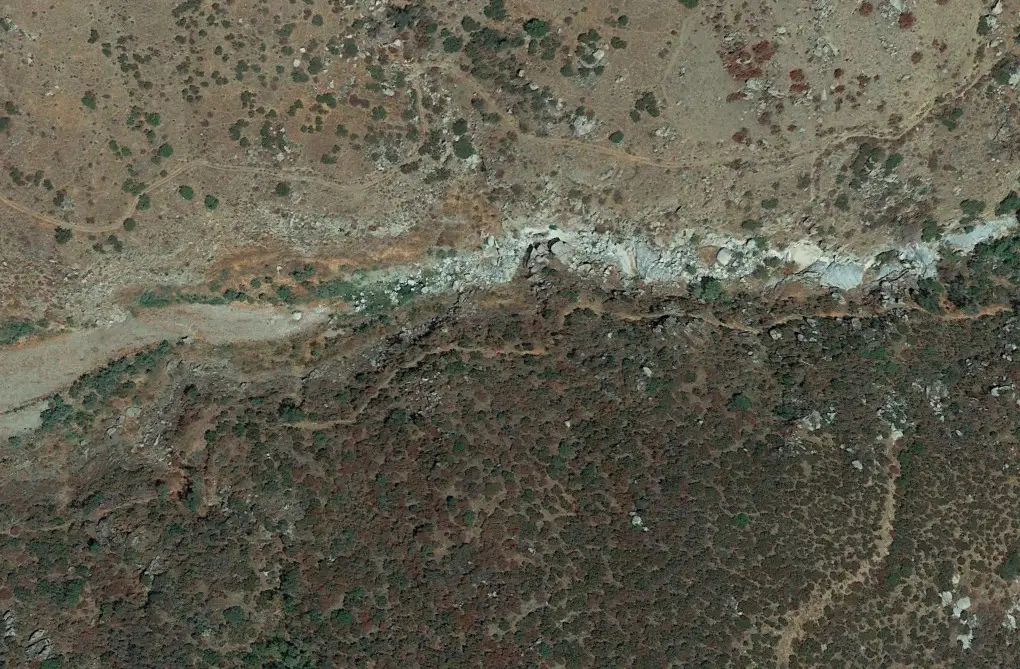
Look carefully – this is the MOUTH creek under low water conditions…

Hold on to your fishing rods, because the Canejos Creek Arm is like a fish paradise, especially during the spring and summer.
The shores are loaded with so much brush, it’s like a jungle out there. And if that’s not enough to make you reel with excitement, there are also multiple secondary ditches that feed into the middle of the creek, making it a hotspot for both bass and crappie.
So grab your gear and get ready because this is a most fish area on this lake!
Located: South end of the lake
Structural features: Flooded vegetation, submerged brush, standing timber, creek channel, rocky banks, boulders, and ledges
Best species to target: Bass
Most effective way to fish this spot: Boat
Boat Ramps at El Capitan Reservoir
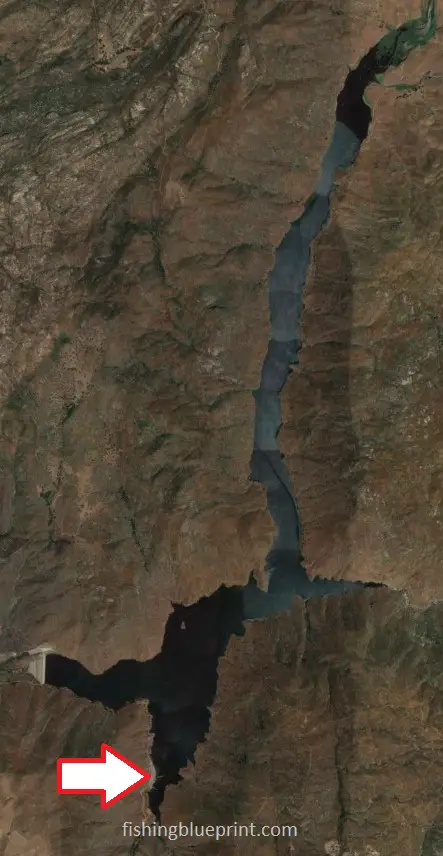
El Capitan Boat Launch
Location: south end
Lanes: 2
Email: https://rockymountainrec.com/lake-facilities/listing/el-capitan-lake
Gas: No
Bathrooms: Yes
Showers: No
Electric: No
Camping nearby: No
Tackle Shops Near El Capitan Reservoir
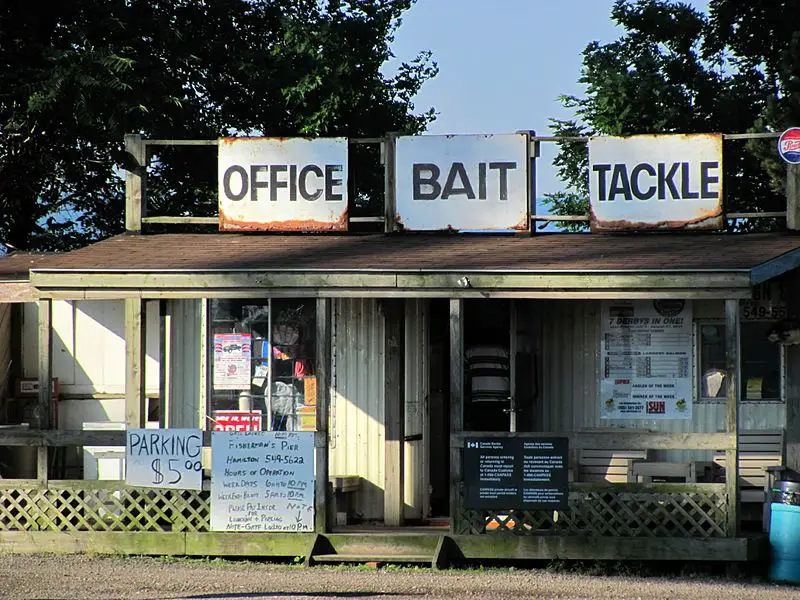
East County Bait and Tackle
10137 Maine Ave, Lakeside, CA 92040
(619) 390-9112
Angler’s Arsenal
12255 Woodside Ave, Lakeside, CA 92040
(619) 466-8355
Hook’d Bait and Tackle
9113 Mission Gorge Rd B, Santee, CA 92071
(619) 328-2130
Liberty Bait and Tackle
9520 Pathway St, Santee, CA 92071
(619) 333-9318
In Summary...
As you now can see El Capitan Reservoir Lake fishing can be tough at times, but it’s not impossible and with the help of the El Capitan Reservoir Lake Fishing Report… It definitely helps you get started on the right foot quickly and easily, so you can avoid wasting hours wondering where and how to get started.
Did You Get All This?
As fellow fisherman and content creator I thrive on helping others… I feel like I can do the most good by helping others… And frankly… I would feel like I did something wrong if you didn’t walk away feeling a little better about this lake.
I truly want to over deliver for you…
So Let Me Ask You Another Question…
After reading this helpful report:
- Can you see how this could change the way you would fish this lake?… To make it easier, faster… and… with less headache, less frustration?
- If nothing else, do you now have a better sense of where you can get started, even if you have have been here?
- Do you feel that you have a good grasp of what species to expect in this lake?
- Do you have a good understanding what baits are needed to catch each of the different species of fish?
- Earlier we came up with some helpful spots to catch more fish, can you see yourself considering any one of those spots? Which ones are you the most excited about implementing when you get to the lake?
- Is it fair to say that using these spots would give you a significant advantage over someone else who’s fishing this lake?
I Need To Ask A Favor From You And It’s Not Going To Cost You A Single Dime…
If you have gotten anything out of this free report; whether its knowing where to get started, what kinds of fish are in this lake, what baits to use, where to launch your boat, where to buy a frosty beverage, where to camp, and other things to do when you’re at this lake…
Then I need you to do something that is going to help you your fellow angler…
And that is share this report. Please share it to as many people as you can. It’s free to you and it really helps me out as a creator.
Lastly… thank you for spending your time reading through this report and I hope you have a luck on the water.
THIS IS WHERE YOU CAN HELP ME THE MOST: There’s a lot of information about this subject you have found helpful, and I’m sure you’ll be able to put some of the knowledge bombs to use. But sharing this report helps drive traffic which in turn helps me at absolutely no cost to you. I love creating reports like this for you, and you like reading these types of reports please share this with your friends, family, and fellow anglers.
Click on your favorite social media buttons to share this page now!
Other California Related Fishing Articles
- Bass Lake Fishing Report
- Clear Lake Fishing Report
- Castaic Lake Fishing Report
- California Delta Fishing Report
- Diamond Valley Lake Fishing Report
- Don Pedro Reservoir Fishing Report
- Eagle Lake Fishing Report
- El Capitan Reservoir Fishing Report
- Lake Berryessa Fishing Report
- Big Bear Lake Fishing Report
- Folsom Lake Fishing Report
- Irvine Lake Fishing Report
- Lake Almanor Fishing Report
- Lake Camanche Fishing Report
- Lake Isabella Fishing Report
- Lake Havasu Fishing Report
- Lake McClure Fishing Report
- Lake Oroville Fishing Report
- Lake Perris Fishing Report
- Lake Piru Fishing Report
- Lake Skinner Fishing Report
- Lake Tahoe Fishing Report
- Los Banos Reservoir Fishing Report
- New Hogan Lake Fishing Report
- New Melones Lake Fishing Report
- O’Neill Forebay Fishing Report
- Pardee Lake Fishing Report
- Pyramid Lake Fishing Report
- San Luis Reservoir Fishing Report
- San Vicente Reservoir Fishing Report
- Shasta Lake Fishing Report
- Silverwood Lake Fishing Report
- Trinity Lake Fishing Report
- Whiskeytown Lake Fishing Report
Accessories You’ll Need
Fishing Rod
 Rod –The popularity of fishing is growing and people are becoming much more conscious of different rods that can help them.
Rod –The popularity of fishing is growing and people are becoming much more conscious of different rods that can help them.
Fishermen want the best technique-specific rod for the money.
Luckily, the report I wrote provides you with detailed information in order for you to make buy the rod for the money, and more importantly which rods to avoid at all costs.
>> What Rods To Use For Bass Fishing? 10 Awesome General Purpose Rods Reviewed
Fishing Reel
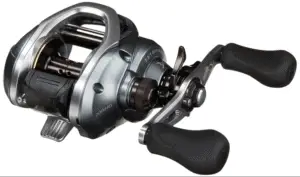
Reel – Having the correct reel to match with your rod is just as important. A good reel should be light and have a buttery smooth drag. There are several great reels on the market, but I recommend the a quality Shimano baitcasting reel. It’s a great reel packed with great features. So much so that it could easily be priced in the mid $200 range.
>>How To Choose A Great Bass Fishing Reel For The Money [and which to avoid at all costs]
Fishing Line
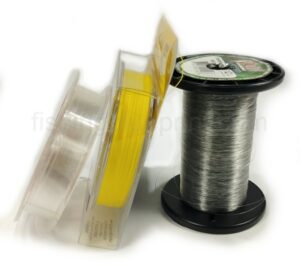
Fishing Line – Having a good line is just as important as having a good rod. I recommend fishing with a good fluorocarbon line. Furthermore, it’s super sensitive because it has little to no stretch, and underwater it’s invisible to the bass! If pride or money is on the line I would use Sunline Sniper FC.
>>21 Tips To Choose The Best Fishing Line
Fishing Lures & Baits

Fishing Lures – It’s pretty hard and darn near impossible trying to catch a fish without using some sort of lure or bait. More importantly these baits you should never forget at home or it could lead to a horrible day on the water
>>5 Bass Fishing Lures You Never Want to Leave At Home
Fish Finder
Finding lunker bass has never been easier when using a fish finding sonar unit. Packed with additional features to make your day on the water even easier. Maps that can plan your day or help you find your way back even in the darkest of nights. Bright bold numbers and letters to make reading the maps easy even in the brightest of days, and colors that pop and make it quick and easy to identify fish.
If you have a boat, kayak, canoe, or float tube, you need a fish finder.
Here’s our choice for the best fish finder between $299-$800:
Humminbird HELIX 7 CHIRP MEGA SI
It has all the features for any serious fisherman whether you’re an avid weekend warrior, or a tournament angler. This has all the bells and whistles you’re looking for.
>> Click HERE to Read The Reviews About Humminbird HELIX 7 CHIRP MEGA SI now
Here’s our choice for the best economic fish finder:
Garmin Stryker
While others look for bites, your fishfinder and GPS plotter help you reach your daily limit. You can mark preferred docks, ramps, and hotspots to easily return to them later and even share waypoints.
Click HERE to Read The Reviews About Garmin Stryker now!
Life Vest
According to Statista, “In the United States, 658 people died as a result of boating accidents and 2,641 people were injured in 2021.”
And it gets even worse… The National Safe Boating Council reported, “Where cause of death was known, 81% of fatal boating accident victims drowned.”
And if that’s not enough the incidence of deaths has climbed dramatically in recent years.
So if you’re on the water you NEED to wear your life vest. Protect you, your friends, and your families lives by wearing a life vest every time you’re on the water.
I recommend the ONYX PFD. It’s comfortable for all day use and there is lots of room for the air to move around so you won’t get sweaty.
>>Click HERE to read all the reviews actual customers!
Sunglasses
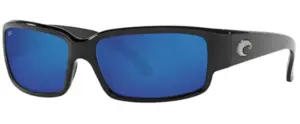 Sunglasses – Do you find yourself fishing in variable light and water conditions? Fishing in open water? Fishing in the bright hot sun? Then, only to leave the lake with eye strain and a splitting headache?
Sunglasses – Do you find yourself fishing in variable light and water conditions? Fishing in open water? Fishing in the bright hot sun? Then, only to leave the lake with eye strain and a splitting headache?
If so, I strongly recommend investing in a pair of Costa Sun Glasses. Thousands of anglers, charter guides, and tournament professionals put their trust into Costa, and so should you. Here’s why…
Costa’s co-injected bio-based nylon frame material is robust and durable, as well as extremely comfortable to wear for all-day use. TR-90 nylon is an excellent material for sports and performance frames since it is heat and cold-resistant.
Costa builds their glasses with class-leading technology. Their 580G glass lens sets them apart from the competition. These lenses are ideal for long days on the lake or sea since you won’t have to worry about scratches on the lens when you wipe the saltwater off. Needless to say they’re Costa’s most durable lenses.
Anyone who spends time outside, especially on the lake, needs polarized lenses. However, not all polarized sunglasses are the same. Costa is 99.9% polarized, giving it the most effective possible in blocking reflecting glare, and minimizing eye strain and headaches.
>>Click HERE to Read The Reviews On These Costa Sunglasses Right Now!
Drift Sock
Simply speaking, a drift sock (also known as a drift anchor) is like a parachute for the water. It gives you the ability to silently troll without spooking the fish!
Anyone who fishes out of a boat, canoe, kayak, stand up paddle board, or any other type of floating vessel should have a drift sock ready to use.
In addition to helping you catch more fish, recreational boaters also like to have 1-2 drift socks handy, just in case their motor goes out on them the drift sock will help slow their drift. This could be instrumental to allow rescuers to find that boat quickly and easily.
I strongly recommend the Drift Master Drift Sock by Mythik Outdoors.
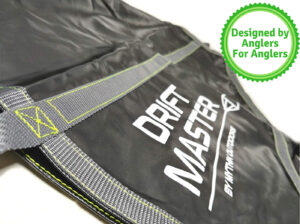 The construction is solid. Holding this in your hands gives you the peace of mind this feels durable and dependable.
The construction is solid. Holding this in your hands gives you the peace of mind this feels durable and dependable.
I love that it’s made from the gorilla-strong “RipStop” high density material, and I like that it’s even paired with the high-density nylon strapping.
It’s 30% stronger than other competitors who use a cheaper version of the RipStop material, so you never have to worry about his ripping.
Looking closely I can see they even triple stitched the high-tension points which is a good feature.
But best part… the Drift Master comes in a complete kit!
So get yours today and don’t leave yourself adrift.
The last thing to note is the Mythik Outdoors Drift Master drift sock kits sell out fast, so make sure you get yours before they’re gone!
>>Click HERE to Read The Reviews On This Drift Sock Today!
Landing Net
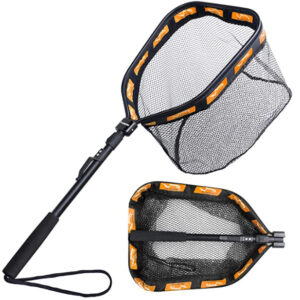 Landing Net – As you are reeling in that monster fish, you don’t want to injure yourself or knock the fish off the hook by trying to grab it.
Landing Net – As you are reeling in that monster fish, you don’t want to injure yourself or knock the fish off the hook by trying to grab it.
The PLUSINNO floating landing net is designed with foam padding on the hoop and provides buoyancy for fishermen. Now, If the net is dropped or blown overboard, the floating design makes it simple to retrieve – so you won’t have to be concerned about losing it! The rubberized net cannot be snagged. It keeps the fish safe for catch-and-release, and the non-absorbent covering avoids waterlogging and odor absorption in the net. It’s collapsing design allows for easy storage.
That’s why I recommend a dependable telescopic landing net.
>>Click HERE to Read The Reviews On This Floating Landing Net Today!
Fishing Weight Scale & Culler
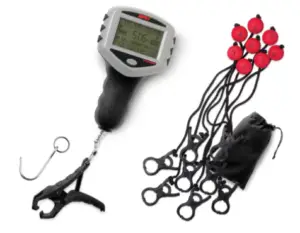 Fishing Weight Scale – Whether you’re going to keep your catch or just take a photo of it and brag to your friends it’s important to have an accurate scale. The Rapala Tournament Model Touch Screen Scale makes weighing and logging your catch easier and more convenient. The large digital scale has a lot of functions and is easy to use. simply keep track of your current catch and its place in your overall weight. To see the weight, just suspend the catch from the heavy-duty composite clamp or the accompanying stainless steel hook. Adding the important details to your catch couldn’t be easier – simply input your catch’s weight and tap on one of the eight storage places. The culling process makes it simple to identify fish that should be released for the greatest overall weight.
Fishing Weight Scale – Whether you’re going to keep your catch or just take a photo of it and brag to your friends it’s important to have an accurate scale. The Rapala Tournament Model Touch Screen Scale makes weighing and logging your catch easier and more convenient. The large digital scale has a lot of functions and is easy to use. simply keep track of your current catch and its place in your overall weight. To see the weight, just suspend the catch from the heavy-duty composite clamp or the accompanying stainless steel hook. Adding the important details to your catch couldn’t be easier – simply input your catch’s weight and tap on one of the eight storage places. The culling process makes it simple to identify fish that should be released for the greatest overall weight.
I recommend a Rapala Tournament Scale that has a large LED display like this one fishing scale here.
>>Click HERE to Read The Reviews on This Tournament-Grade Fishing Scale & Culling System now!
More articles just for you...
Funny Fishing Rules, Laws, and Regulations 2025
Crazy Fishing Laws That Will Blow Your Mind! #7 is INSANE! Strange Fishing Regulations and Laws As silly as hook and rod limits may seem,
EXPOSED! How To Use A Spinnerbait The Right Way for 2025
Are You Wondering How To Use A Spinnerbait? Or How To Work A Spinnerbait Over Grass, Logs, or Points? Well, All These Questions Are Answered
EXPOSED! Best Crankbait Colors for 2025 [Which to Buy & Avoid]
What color crankbait to use? Crankbait Color Chart I just love going into a Bass Pro Shops store and just staring at all the walls
Best Underwater Dock Lights For Fishing – 2025 Buyers Guide
Night Dock Light Fishing For Beginners Dear fellow angler, Does this sound like you? You’re someone who loves fishing but just wants to escape the
15 Best Deep Diving Crankbaits [2025 Buyers Guide – Which to Buy & Avoid]
A Complete Buyer’s Blueprint On The Best Deep Diving Crankbaits for Bass, Walleye, or Striped Bass On The Market Today Fishing deep diving crankbaits can


